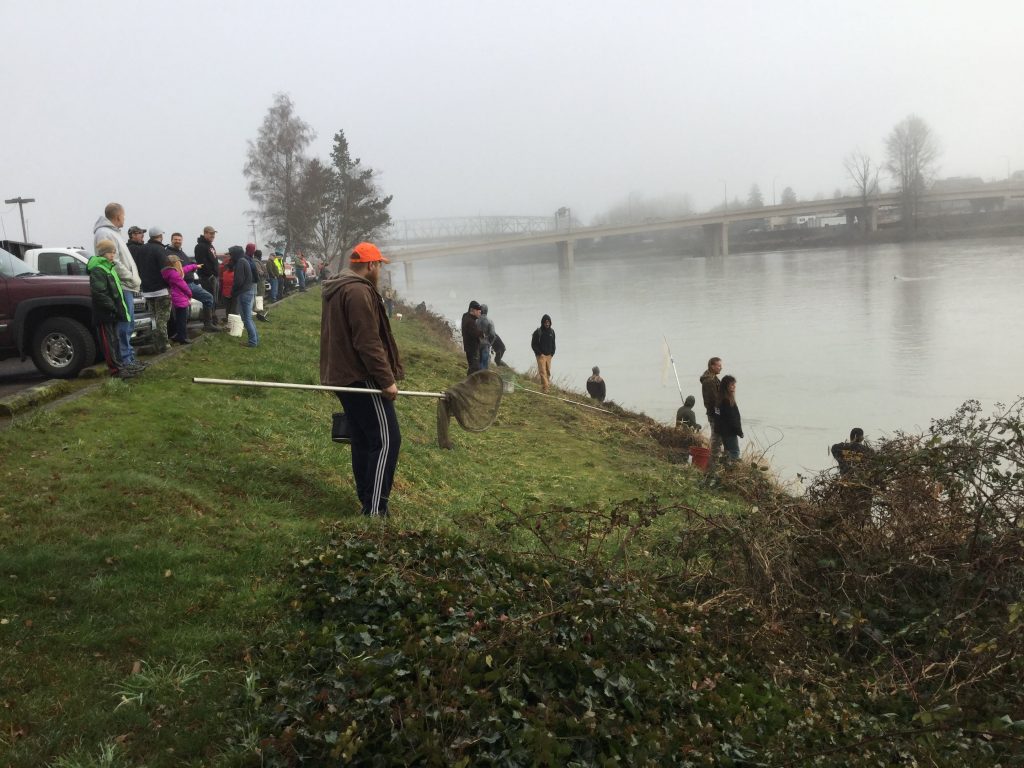
Surge Of Smelt Moves Up The Columbia
Columbia smelt managers extended the research-level commercial fishery as a push of the oily fish entered the big river in recent days and rekindled hopes of a sport dipping opener on the Cowlitz as well.
That’s a decision for WDFW, consulting with Cowlitz County health officials concerned about Covid-19, to make, and there are indications they are “actively engaged” on that front, but this morning’s Columbia Compact call was all about ODFW and WDFW approving four more days on the shared mainstem for netters.

They’ve been fishing off and on on Mondays and Thursdays since January 28 and while catches and effort have varied from low to nil over the first three and a half weeks, totaling just 192 pounds in seven deliveries, it took off on Monday.
According to a fact sheet, a total of 4,247 pounds of smelt averaging 708 pounds a delivery were landed, reportedly the highest single-day average since 2014.
In addition to collecting biological information on the Endangered Species Act-listed population, the catch data is used as a gauge for sport dipping.
Commercial fishermen on this morning’s conference call reported that a “hell of a charge” of fish had come across the Columbia Bar over the weekend, with many still down near the Astoria-Megler Bridge.
Along with supporting more time on the water for their fleet, they called on Washington managers to open the Cowlitz for recreational dipping.
A tribal representative also reported anecdotally that subsistence fishers were beginning to catch smelt in the Southwest Washington tributary.
This push of fish follows an initial surge in late January and early February, when the Columbia was flowing at a relatively warm 42 degrees at Bonneville Dam. With mid-February’s snows and cold weather, the big river cooled off to 37.9 degrees, perhaps kegging the smelt up, and now the fish are making their move upstream to spawning grounds in the lower Cowlitz and elsewhere.
While today’s fishery discussion was focused on the Columbia and commercials, WDFW’s river manager Charlene Hurst and smelt manager Laura Heironimus both said that the agency was discussing the run and sport dipping with local health officials.
Openers can bring thousands down to the banks of the Cowlitz, which is fine in a normal year, but given the pandemic it’s more of a concern for officials.
Last year’s first opener in mid-February yielded over 35,000 pounds of smelt for an estimated 4,300 dippers, while the second was a bust. Still, it was the first season in three years.
Following 2010’s ESA listing, WDFW was able to get the National Marine Fisheries Service to buy into the idea of commercial and recreational “research fisheries” to help fill in data gaps about a species that isn’t as well known as others, including age and sex composition of the run, and fecundity. Dipping also provides a key “connection” for keeping the public engaged in their recovery.
